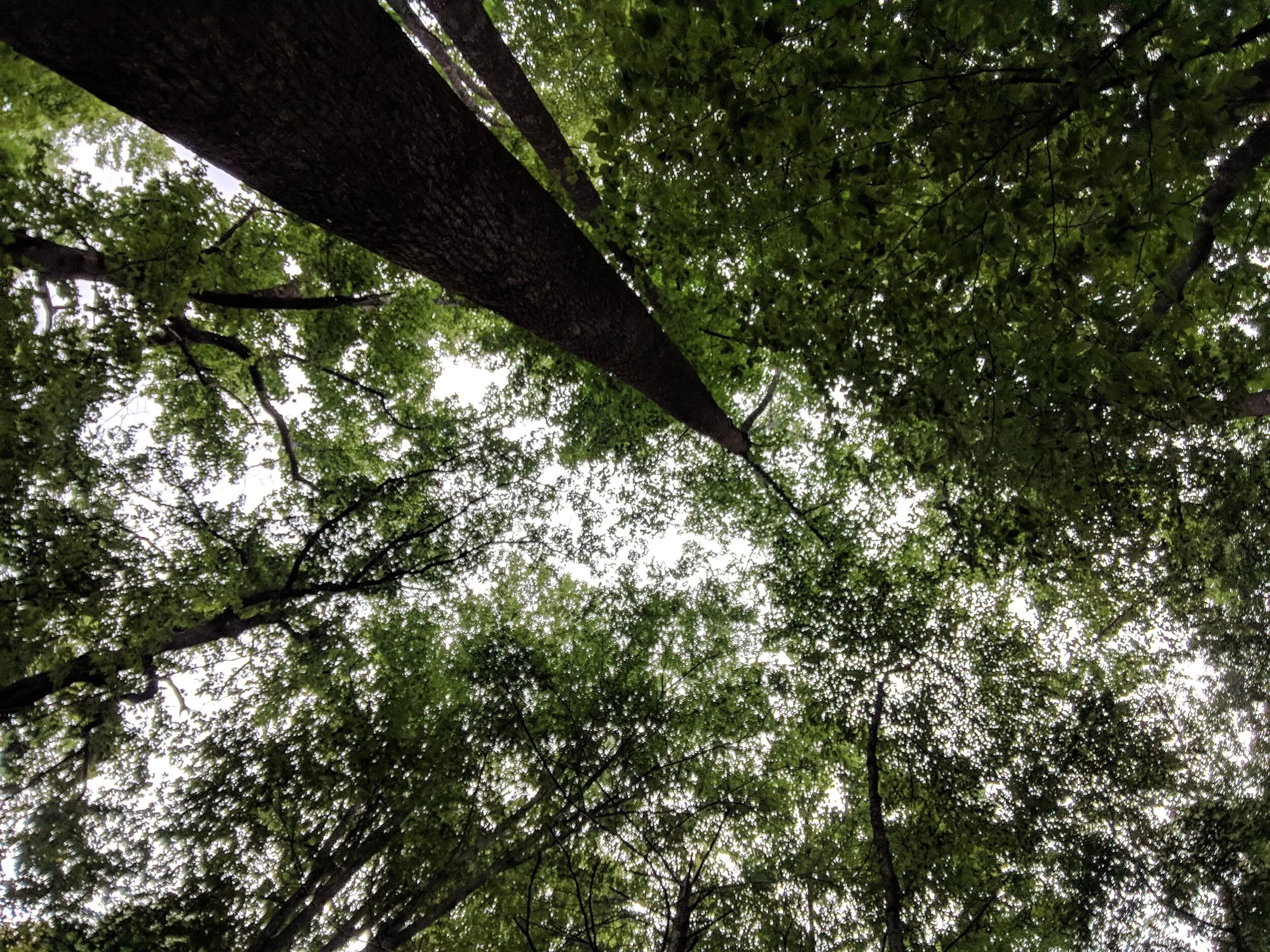Right Plant, Right Place
Cool alliteration… what does it mean though? At Floravie Design, we use the Right Plant, Right Place principles because, well, it just makes sense. In short, you use plants in places where they will be happy. They have the correct soil and light conditions with ample room to grow to their mature size.
Image source HERE
For example, when using the Right Plant, Right Place principles in landscape design, you would never plant a Southern Live Oak (that has mature heights of 50-100’ with widths of 50-200’) in a small front yard under a powerline. The tree would never be able to reach it’s full, mature size with any kind of healthy growth. It would need constant pruning to stay away from buildings and the powerline. These beautiful trees should be planted in areas where their roots and canopy can spread to their full potential, such as in a public park or parking lot for shade. This beautiful Live Oak pictured above is here in Orlando at Constitution Green Park. Could you even imagine if this was planted in a tiny yard and hacked away at and forced to fit? No. No no no. Right Plant, Right Place.
Okay, let’s talk about light conditions. This is probably the most misunderstood but most important part of landscape design. When thinking about landscape ideas and landscape style, the amount of sunlight an area receives should be the number one factor driving the plant selection. There are three main light condition categories: full sun, part sun/shade, and full shade. Of course there are subcategories of each of those including dappled shade, morning sun/afternoon shade, deep shade, etc. A plant will not survive without the right light conditions. A full shade plant will never survive in full sun. It is biologically designed to thrive in shade. Same goes for full sun plants, they need that blast of Vitamin D and heat most of the day to be happy. Now, most plants fall somewhere in between, as long as they get 4-6 hours of full sun they will be happy tolerating shade the rest of the day. Some picky plants, such as hydrangea, need sun in the morning but need to be protected from the intense afternoon heat. All light conditions are driven by the orientation of the sun during different parts of the day. Morning sun is usually found on the east side of buildings, full sun to the south, and afternoon sun to the west, with full shade to the north. Of course there area always other factors at play such as existing buildings, trees, shade structures, and even the seasons. Learning about the light conditions of your yard is the most important step in your landscape design process.
Another Right Plant, Right Place principle is mature size. When plants are not being trimmed and pruned, they all have a size that they will naturally mature at, just like people. Unless you are committed to constantly trimming and clipping and hedging and pruning and shaping, understanding the mature size of a plant is vital. Using proper on-center spacing (meaning the distance between main stems of each plant) and providing ample vertical space for the plant to grow will promote healthier, more vibrant plants. To understand the accurate on-center spacing, you should learn the size the plant will be after three years of growth and use that width as your on-center spacing. For example, Dwarf Walter’s Viburnum reaches a 3’ spread at three years of growth so a 36” on-center spacing is appropriate. In three years they will grow together to form a nice mass and have enough space for each plant to get the proper nutrients. If planted closer together you will get a more instant effect, but over time the health of the plant will deteriorate. Plants require a certain level of moisture and nutrients to survive, if they are overcrowded they will compete for those resources and ultimately start killing each other (Hunger Games, anyone?). Mo plants does not = mo betta. Right Amount of Plants, Right Amount of Space.
The next and final lesson is about moisture levels and drainage in your yard. While thinking about your landscape ideas, you should definitely consider how your yard drains (or doesn’t drain) water in your landscape design. Do you have a spot that floods everytime it rains? If so, we should consider this a “wet zone” and choose plants that can tolerate wet feet. What are wet feet? Some plants can tolerate being flooded for periods of times while others will rot if they have standing water. Cypress trees are a great example of a plant adapted for wet conditions. They can thrive in water, on the water’s edge, and even in dryer parts of the landscape. Many plants in our area require fast-draining soil that does not hold water, which is why it is easy to grow landscape plants and less easy to grow vegetable gardens. Our soil does not hold moisture, it is sandy and quickly percolates. Lucky for us, most of our native plants are adapted to these soil conditions and thrive in them, need them. Understanding how water flows through your landscape is critical for planting happy plants. Right Plant, Right Place.
Now that you know what it means, it just makes sense, right?! Why wouldn’t you use the Right Plant, Right Place principles in your landscape design? We at Floravie Design are proud of our design skills and horticultural knowledge. By using these principles, we protect your investment and help your landscape naturally grow into it’s most beautiful self. Have questions? We seriously love talking about this stuff! Reach out to us or comment below, and let’s talk plants!





